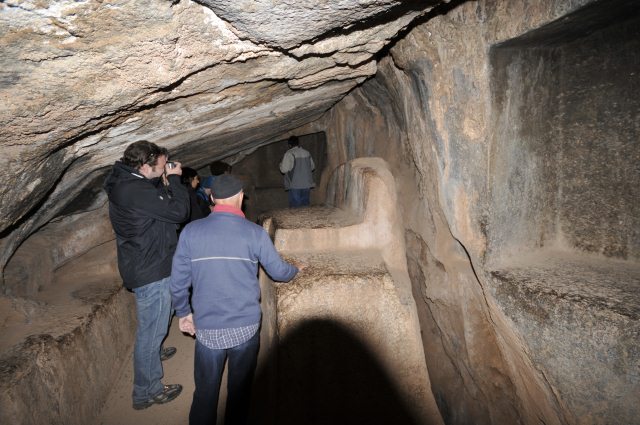|
Sacsayhuaman
We got on the bus, leaving the town below we drove steeply upward for ten
minutes, entering the National Park of Cuzco.
Sacsayhuaman – funnily enough pronounced sexywoman.
Visitors to this
magnificent Inca fortress, which overlooks the city of Cusco, cannot fail to be
impressed by the beauty and monumental scale of this important Inca
construction. Sacsayhuaman can be variously translated as 'speckled falcon' or
'speckled head'. The last interpretation refers to the belief that the city of
Cusco was set out in the form of a puma whose head was the hill of
Sacsayhuaman. The origins are uncertain but the fortress is generally
attributed to the period of Inca Pachacuti, the man who essentially founded the
Inca Empire.
The main ramparts
consist of three massive parallel walls zigzagging together for some four
hundred meters, designed to make any attacker expose his flanks. The massive
blocks, the largest being twenty six feet high and weighing nearly three hundred
tonnes, are fitted together in absolute perfection. The foundations are made
of Yucay limestone brought from over fifteen kilometers away. The outer
walls are made from massive diorite blocks from nearby, and the inner buildings
and towers are made from dark andesite some of it brought from over twenty two
miles away. Tools were only natural fibre ropes, stone hammers
and bronze chisels - an enormous task. The chronicler Cieza de Leon, writing in
the 1550's, thought that some twenty thousand men had been involved in its
construction: four thousand men cutting blocks from the quarries; six thousand
dragging them on rollers to the site; and another ten thousand working on
finishing and fitting them into position. According to legend, some three
thousand lives were lost when one huge stone that was being dragged uphill broke
free.
The tallest rock on site
Sacsayhuaman played
an important part in the final defeat of the Inca Empire by the Spanish.
Pizarro's party entered Cusco unopposed in 1533 and lived there securely for
more than two years before finally being caught unprepared by the rebellion of
Manco Inca in 1536.
Manco's troops took
the fortress of Sacsayhuaman, overlooking the city, and used it as his base to
attack the Spanish. After weeks under siege in the city the Spanish broke out
and charged into the surrounding hills to the northwest above the city. They
then doubled back to capture the rocky outcrop opposite the fortress. From this
outcrop they made repeated attacks across the flat plaza against the walls of
the fortress. All the Spanish reinforcements on their way from Lima to Cusco had
been massacred, so if the Spanish failed to take the fort they were doomed. In
the evening, against all odds, the Spanish eventually broke through the Inca
defenses and scaled the walls of the fort driving the defenders into the
fortified complex dominated by three towers (foundations only remain today).
After two more days of fighting the Conquistadors finally overwhelmed the
natives, putting them all to the sword. It was said that during the battle a
leading Inca nobleman, armed with a Spanish sword and shield, caused havoc by
repulsing every enemy who tried to scale the last tower left in Inca hands.
Having sworn to fight to the death, he leapt from the top of the tower when
defeat was inevitable, rather than accept humiliation and dishonour.
Bear at the rear of the party, Alan at the front and Anne
mid group as we explore this enormous site. The statue of Jesus on the hill is
the first time we see how the Spanish "took over" all important high points.
They knew how mountains were key to the Inca religion, knowing of their
worship and sacrifices. To dumb this down and push Catholicism they raised
crosses, statues and carved crosses into hundreds of mountains and
hillsides.
Q'enko -
Zigzag
This is one of the
finest examples of a rock artfully carved insitu showing complex patterns of
steps, seats, geometric reliefs and a puma design. The rock is an excellent
example of the Inca 'Rock Worship'. In Inca cosmological beliefs the
Incas held large rocky outcrops in reverence, as if they possessed some hidden
spiritual force. On top of the rock are zigzag channels which served to course
chicha (local maize beer) or
sacrificed llama blood for purposes of divination; the speed and route of the
liquid, in conjunction with the patterns made in the rock, gave the answers to
the priest's invocations.
Inside
the rock are large niches and an possible altar. This may have been a place
where the mummies of lesser royalty were kept along with gold and precious
objects. Alan at the altar.
Wiggling back out of the rocks. View over the city as night
fell
ALL IN ALL EVER SO
INTERESTING
|
















